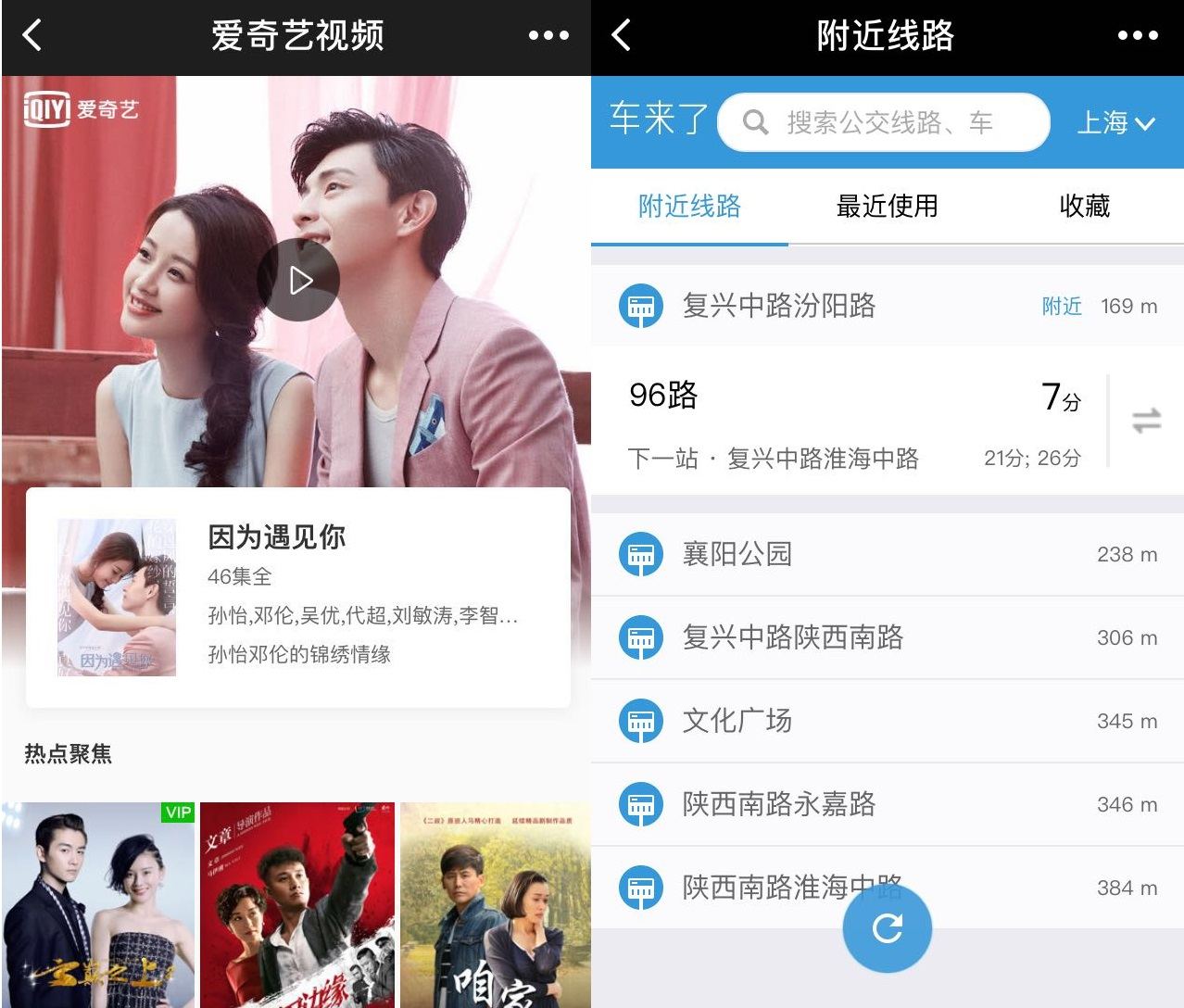
Photo credit: Tech in Asia.
In China, WeChat is uncontested in its dominance over online traffic. People use it to read news, order food, hail cabs, pay their bills, and, of course, chat. But with 889 million monthly active users and little traction abroad – a market dominated by WhatsApp and Facebook Messenger – the Chinese messaging app is turning its attention towards a vast and untapped source of traffic in its home market: offline services.
“The strategy for WeChat is they’re trying to embed themselves into your lives […] and make it so that you can’t leave WeChat,” Matthew Brennan, co-founder of WeChat consulting and research firm China Channel, tells Tech in Asia. The app is basically an “operating system for your life in China,” he says.
WeChat is basically an operating system for your life in China.
However, if it remains a purely online tool or a social network, it’s liable to face competition in the long-term from companies like Momo and even QQ – WeChat’s internal rival. “They can’t be cool forever,” he says. “They’ve already done an amazing job, but they’ve reached a saturation point.”
That’s where mini programs come in. Last Thursday, at a WeChat conference wholly dedicated to the app’s latest feature – embedded apps that don’t require installation – the focus on offline services took center stage. Kentucky Fried Chicken showcased its “don’t wait in line” mini program where users can order food; bike-sharing startup Mobike explained how users can rent and unlock bikes by scanning a QR code via WeChat.
“These kinds of IoT applications have only just begun,” says Matthew, referring to Mobike’s connected bike locks.

Left to right: 1) Video streaming site iQiyi’s mini program lets you watch TV shows. 2) this mini program tells you where nearby bus stops are and when the next ride is (ex: bus 96 is coming in seven minutes).
The offline-to-online factor isn’t new to WeChat by any means. Its mobile payment system allows users to pay via QR code at both five-star restaurants and hole-in-the-wall noodle shops, as does Alipay, WeChat Pay’s main competitor. The app even has iBeacon capabilities, which lets physical shops entice passersby with discounts and other engagement tricks – though that never really took off, probably because it requires Bluetooth.
But mini programs are different. Besides being lightweight, they’re designed to be strictly context-driven – they should only appear if a situation requires it. If not, it remains invisible to users.
They’re designed to be strictly context-driven – they should only appear if a situation requires it.
For instance, there’s a mini program that gives users timely updates on nearby buses. If you’re at a bus stop, you might see its QR code. But if you’re not waiting for a bus, you won’t be triggered to open it. Push notifications and other marketing tools have deliberately been stripped away. And to access them, you have to physically scan a QR code, search for the program’s name, or have it shared in a chat group or via a friend.
“A large portion of our clients that want mini programs have offline applications,” Sheng Pang, CEO of digital agency JuPlus, tells Tech in Asia. “They don’t have a need for marketing.”
For instance, the Shanghai-based agency is currently working with a hospital to create a mini program for queuing. They’re also creating a check-in and check-out mini program for a hotel, as well as a program that attaches how-to videos via QR code to physical products. All of these address a specific need in a certain context – and don’t necessitate a full-blown smartphone app.
“If you want to use mini programs to do some marketing, attract and accumulate followers, and then follow-up with advertisements, it’s not that kind of medium,” he says.

Pedestrians browse one of Shanghai’s busiest shopping streets, Nanjing East road. Photo credit: rafaelbenari / 123RF.
In Tencent’s fourth quarter financial statement for 2016, the company laid a clear vision for mini programs as features that could “broaden and deepen […] services in low-frequency use cases, connect more offline services to online users, and provide more venues for users to sample functionalities offered by apps.”
If the Chinese tech giant is successful, that would not only bring more services into WeChat’s enormous ecosystem – further entrenching the app into the lives of users – but also payments. For brick-and-mortar retailers or any offline service, mini programs could be a way to boost foot traffic and connect to WeChat’s multi-million user base.
“Mini programs shift and give soft power back to those who create physical goods and services, giving them digital influence,” wrote Connie Chan, partner and China-watcher at Andreessen Horowitz, on Twitter earlier this month. “They are bookmarks, online shortcuts dropped all over our physical world, accessible by smartphone.”
Marketing disconnect
To be sure, mini programs are still in their infancy. Launched in January, WeChat’s latest feature still needs a lot of work and time for adoption.
Last month, in a study conducted by consulting firm iiMedia Research, less than 10 percent of surveyed developers said they would continue developing mini programs. Part of that has to do with the feature’s core ethos of only appearing when needed. By design, they’re not sticky. That makes it hard for marketers to see their value.
“Every company has their own KPI,” says Sheng Pang. “A lot of marketers have KPIs for their number of followers or users.” Many clients are also confused about mini programs and associate them with WeChat brand accounts, he says. While brand accounts also offer a wide range of services, they’re not ephemeral in the way that mini programs are, and are more suitable for gathering leads.
By design, they’re not sticky. That makes it hard for marketers to see their value.
It’s also not easy to launch your own mini program if you’re not a developer. To build one, you need to use Tencent’s proprietary language, where HTML is replaced with ‘wxml’ and CSS with ‘wxss.’ If WeChat wants all kinds of services – not just tech companies or companies with technical resources – to join its platform, making it easy to create mini programs will be crucial.
Still, success cases are slowly emerging. Earlier this month, one of WeChat’s own brand accounts published a case study of the bus schedule mini program, which has seen more 160,000 users since launching two months ago, with around 8,000 new users per day. A wide variety of mini programs have gone live since its launch, including programs for watching videos, accessing legal services, tracking menstrual cycles, and checking the level of air pollution.
The Chinese tech giant is also rolling out new features to boost mini program functionality and adoption. During the WeChat event on Thursday, Tencent announced an upcoming “mini programs nearby” feature that will let app users browse and look for mini programs within a certain vicinity. Augmented reality and image and voice recognition capabilities are slated for future versions as well, though it will take time for them to be adopted.
“Clients like to hear interesting ideas, but they want to know that the technical implementation is mature and that there won’t be any issues,” says Sheng Pang. For instance, though his team proposed a lot of new ideas, the hospital they worked with was conservative.
“From their perspective, not messing up is their biggest and most basic requirement,” he says.
Watch: WeChat wants to kill off apps
This post WeChat’s latest feature aims to make it even more omnipresent appeared first on Tech in Asia.
from Tech in Asia https://www.techinasia.com/mini-programs-conference-offline-businesses
via IFTTT
No comments:
Post a Comment